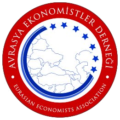
International Conference on Eurasian Economies
29-31 August 2016 – Kaposvár, HUNGARY
Paper detail
Paper ID : 1804
Status : Paper published
Language : English
Topic : Finance and Financial Crises
Presenter: Vivien Pavelka
Session : 5A Banking
The Comparative Analysis of the Islamic and Conventional Bank System in Turkey
The Comparative Analysis of the Islamic and Conventional Bank System in Turkey
- Vivien Pavelka (Kaposvár University, Hungary)
- Dr. Bánkuti Gyöngyi (Hungarian University of Agriculture and Life Sciences, Hungary)
- Prof. Dr. József Varga (Hungarian University of Agriculture and Life Sciences, Hungary)
Abstract
The aim of our study is the comparative analysis of the Islamic and conventional bank systems in Turkey focusing on the years of the last financial crisis. The financial crisis of 2008 shocked the world and impeached the confidence in the conventional bank systems. It drew the attention to the alternative financial forms like Islamic banking. The best known specialty of the Islamic bank system is the prohibition of interests and speculative transactions. The question is: are Islamic banks more crisis-resistant than the conventional banks? Are they really more stable? We would like to get answers for these questions through analyzing the four Islamic banks and four conventional banks with the same size in Turkey. We set up three hypothesizes: 1. The profitability of the Islamic banks was higher during the crisis than the profitability of the conventional banks. 2. The liquidity of the Islamic banks was higher during the crisis than the liquidity of the conventional banks. 3. The leverage ratio of the Islamic banks was higher during the crisis than the leverage ratio of the conventional banks. The time horizon of the research is from 2007 to 2013 and we get the data from the annual reports of the banks.
JEL codes: P34
Pavelka, Vivien, Gyöngyi, Bánkuti, Varga, József (2016). "The Comparative Analysis of the Islamic and Conventional Bank System in Turkey" in Proceedings of International Conference of Eurasian Economies 2016, pp.125-128, Kaposvár, HUNGARY.
DOI: https://doi.org/10.36880/C07.01804





